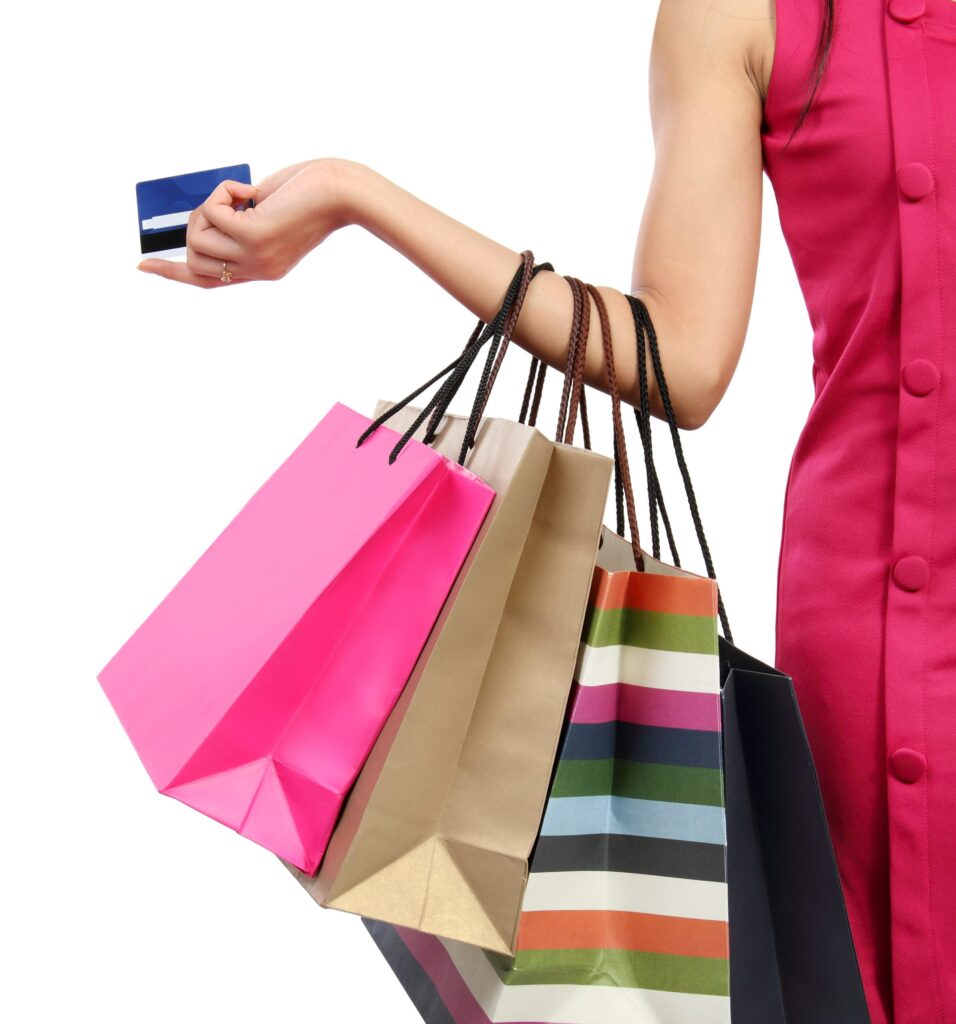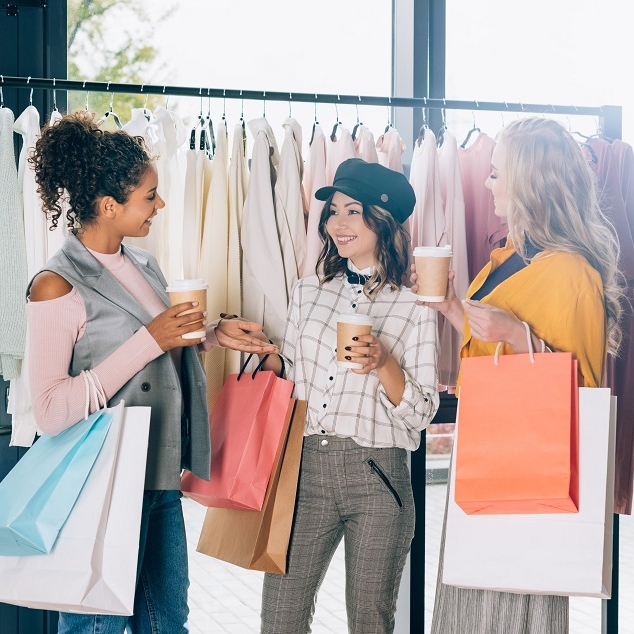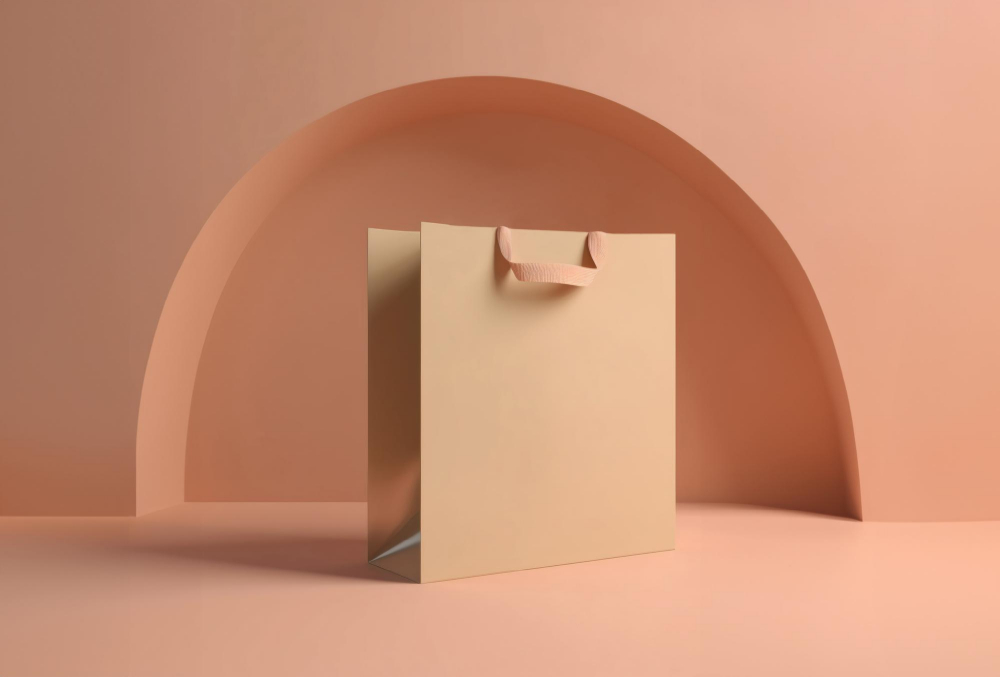This is a full example of the lesson from the advanced course Art of English. Although in the Reading part, you have a simplified version of the text
World Shopping Day is celebrated on November, 11. That means it’s time to look around and shop until you drop.
This day in 2009 Chinese Company “Alibaba Group”, Aliexrpess.com particularly, decided to sell 50% of its resources with discounts. The organizers planned that it would become an annual event, when an offered sale would be so great, which would be impossible to refuse. They were right. Other large Chinese internet sites have joined this ‘big sale day” very quickly and this day has become a perfect day to make good and cheap purchases.
Get to know what type of shopper you are. Do this quiz and see the results.
Get ready for another quiz checking your shopping vocabulary.



Grammar: Using advanced patterns
Read some structures from the article you’re going to read. Pay attention to how the sentences are organized.
- Rhetorical Questions and Complex Clauses
- “The question isn’t just whether you need another pair of shoes or another gadget; it’s about understanding the fine line between a harmless splurge and an addiction.”
- Focus: The use of rhetorical structures and subordinating conjunctions (whether, it’s about) to present nuanced ideas.
- Practice: Create rhetorical questions about habits, e.g., Isn’t it time to rethink our spending habits?
- Figurative Language and Idiomatic Expressions
- “Riding the dopamine wave all the way to the cashier.”
- Focus: Figurative phrases like riding the dopamine wave and idioms (bursting at the seams) to create vivid imagery.
- Practice: Replace figurative phrases with their own creative alternatives, e.g., being on cloud nine, drowning in guilt or floating on happiness..
- Subordinate Clauses with Time Expressions
- “It’s all fun and games until your closet is bursting at the seams with items you don’t recall purchasing.”
- Focus: Using until to introduce a condition that changes a situation.
- Practice: Write sentences contrasting situations with until, e.g., You won’t understand budgeting until you track your spending.
4. Conditional Statements
- “If your shopping habits are giving your wallet an identity crisis… it might be time to chat with a mental health professional.”
- Focus: Using the first conditional to discuss realistic consequences of actions.
- Practice: Write “cause and effect” sentences about their habits using if and might.
5. Informal Ellipsis
- “Diagnosing Your Shopping Fever”
- Focus: Ellipsis (omitting words like We are or How to) to make headings or informal speech concise.
- Practice: Rewrite long titles into shorter, catchy ones using ellipsis, e.g., You can recognize a shopaholic by how often they shop and how guilty they feel afterward. It’s important to create a budget and track your spending regularly to avoid overspending.
- Possible variants: Recognizing a shopaholic: frequent shopping and post-shopping guilt. Important/Avoiding overspending: Create a budget and track spending.
6. Participial Phrases for Description
- “Caught red-handed? Don’t worry, your secret’s safe here.”
- Focus: The use of participial phrases (caught red-handed) for descriptive effect.
- Practice: Add participial phrases to sentences, e.g., Lost in thought, she walked past the store.

Shop until you drop?
Reading
Before reading the text, could you define a person who is shopaholic? Now get the information from the article and see if you are right. If your level of English is A2, you might want to read the simplified version on the right, although it’s always great to challenge yourself.

Are clearance sales your kryptonite? Do you fantasize about buying things you don’t need but really, really want? Take the quiz and find out how you score on the shopaholic scale!
Are You A Shopaholic?
Ever find yourself in a maze of shopping bags, wondering if your retail adventures are just a bit of retail therapy or something more? You might chuckle at the term ‘shopaholic,’ but this light-hearted label can hide a more challenging reality: compulsive buying. It’s all fun and games until your closet is bursting at the seams with items you don’t recall purchasing, and your bank account seems to be on a permanent diet.
The question isn’t just whether you need another pair of shoes or another gadget; it’s about understanding the fine line between a harmless splurge and an addiction. It’s about recognizing when the thrill of the purchase becomes the main event, and you’re riding the dopamine wave all the way to the cashier. Here, my friend, is where you need to ask yourself: are your shopping habits the good kind of ‘extra,’ or are they edging into shopaholic territory?
Well, it’s time to cart your curiosity over to the BrainFall quiz and find out just how much of a shopaholic you may be. Slide those credit cards back into your wallet for a minute and take this test that could reveal more about your shopping tendencies than the latest flash sale. Keep your receipt, you might be in for a few surprises!
Diagnosing Your Shopping Fever
Recognizing the Shopaholic Symptoms
You know you’re in deep when:
- Your heart does the cha-cha whenever a sale email pings your inbox.
- Euphoria lifts you up like a helium balloon during every purchase but leaves you deflated when the bill arrives.
- Those sneaky piles of never-worn clothes whisper sweet nothings from your closet.
Emotional indicators:
- Shopping feels like your comfy blanket for stress, anxiety, or depression.
- Guilt, and its evil twin, shame, crash your shopping spree afterparty.
In short, if your shopping habits are giving your wallet an identity crisis and your emotions a roller coaster ticket, it might be time to chat with a mental health professional who understands the difference between retail therapy and retail chaos.
The Emotional Roller Coaster of Buy-it-itis
Imagine this:
- You spot that pair of shoes—you know, the ones that promise you happiness rivaling a puppy’s first snow day.
- Euphoria shoots through the roof as you swipe your card, buy button, or tap to pay.
- Guilt creeps in like a ninja while you carry the shopping bags that feel heavier with each step.
- “I’ll do better next time,” you chant, yet the cycle repeats, each mishap chipping away at your mental sanctuary.
Pro tip: Keep track of your moods pre- and post-shopping escapade. Spot a pattern? It might be compulsive shopping wearing a trench coat and pretending to be your hobby.
Caught red-handed? Don’t worry, your secret’s safe here. But take a leisurely stroll over to find out if you’re really a shopaholic, or if you just have a zest for ‘spending with style’.
Tackling the Shopocalypse
You didn’t just stumble upon the latest fashion sale, but a sale of strategies to kick that buying binge to the curb. You, my dear shop-warrior, are about to embark on an epic quest to slay the dragon of shopping excess.
The Wallet-friendly Workout Plan
Start flexing your financial muscles! It’s time to evaluate your bank statements with the intensity of a personal trainer scrutinizing a bagel. Grab a pen and some highlighters, and start marking those non-essential spends. Now, craft a budget that fits your income like spandex – comfortable but with no room for splurges. Regularly track your spending, and if that leather jacket whispers sweet nothings to your wallet, walk away. Maybe consider financial counseling if you find your money-management skills are more flabby than fit.
Retail Rehab and Coping Without Copious Consumption
Cold turkey on shopping? Shudder at the thought. But it’s retail rehab time! Swap out impulse buys with coping strategies like taking a walk, or maybe even look into therapy if retail therapy has been more foe than friend. Self-control isn’t just for superheroes – you’ve got this power too. If needed, seek shopping addiction treatment to help refill your arsenal. Some might find relief in antidepressant medications to manage underlying mood disorders driving their shopping. Remember, fighting off the urge to shop is like karate for your credit score – it strengthens with practice.
Summary of the text for A2-level students

The simplified version
Here’s a simplified and shorter version of the article for A2 level learners. Click to unfold the text.
Are You a Shopaholic?
Do you love shopping sales? Do you often buy things you don’t really need? Take a quiz and find out if you’re a shopaholic!
What Is a Shopaholic?
Being a shopaholic means shopping too much, even when you don’t need or can’t afford things. It feels fun at first, but it can lead to problems like no space in your closet or an empty bank account.
Ask yourself: Is shopping just a fun treat, or is it becoming a problem?
Signs You Might Be a Shopaholic
- You feel very happy when you shop but guilty after.
- You buy things to feel better when you’re sad, stressed, or bored.
- Your closet has clothes you’ve never worn.
If this sounds like you, it might help to talk to someone, like a counselor, who can help you.
How Shopping Can Affect Your Feelings
Here’s how it happens:
- You see something you really want and buy it.
- You feel excited and happy.
- Later, you feel guilty or regret it.
- You promise to stop but shop again anyway.
Try to notice how you feel before and after shopping. Do you shop when you feel sad or bored?
Tips to Control Shopping
- Make a budget. Plan how much you can spend and stick to it.
- Track your spending. Write down what you buy.
- Walk away from temptation. If you see something you want, wait a day before buying it.
- Find new habits. Go for a walk or try a hobby instead of shopping.
- Get support. If shopping feels like a big problem, talk to a professional or join a support group.
Remember, you’re not alone, and you can change your habits with practice!
Comprehension check
Answer the following questions:
Comprehension Questions
- What is a shopaholic?
a) Someone who works in a shop.
b) Someone who shops too much, even when they don’t need to.
c) Someone who doesn’t like shopping. - What is one sign of being a shopaholic?
a) Feeling happy after shopping.
b) Buying only things you need.
c) Feeling guilty after buying something. - What might cause someone to shop too much?
a) They are bored or stressed.
b) They need more clothes.
c) They want to save money. - What can happen if someone shops too much?
a) They feel proud of their purchases.
b) Their bank account might have less money.
c) They will always wear everything they buy. - What is one tip for controlling shopping habits?
a) Always shop during sales.
b) Walk away and wait before buying something.
c) Buy everything you like immediately. - Who can help if shopping becomes a big problem?
a) A professional counselor.
b) A friend who likes shopping.
c) A salesperson at the mall.
Check yourself
Correct Answers:
- b) Someone who shops too much, even when they don’t need to.
- c) Feeling guilty after buying something.
- a) They are bored or stressed.
- b) Their bank account might have less money.
- b) Walk away and wait before buying something.
- a) A professional counselor.
The Fascinating Journey of Fashion Through Time
Read and listen to the article about fashion history. Then answer the questions.
Fashion is a vibrant and dynamic expression of identity, culture, and creativity. But have you ever wondered when and how it all began? Let’s take a stylish stroll through history to uncover the origins of fashion.
The Birth of Fashion: A Necessity Turns Art
Fashion’s story begins with early humans, who primarily used clothing for practical reasons—protection from the elements. Imagine wearing animal skins and furs to keep warm during harsh winters. But as societies evolved, so did their clothing.
The first evidence of fashion dates back to around 25,000 years ago, with the discovery of figurines dressed in woven garments. These ancient people not only sought functionality but also started to embellish their clothing with beads and shells, showing a budding sense of style.
Ancient Civilizations and Fashion Forward Thinking
Fast forward to ancient Egypt, Greece, and Rome, where fashion took on new dimensions. The Egyptians were known for their linen garments, adorned with intricate jewelry and cosmetics. They believed in looking their best to honour the gods.
Meanwhile, the Greeks introduced draped garments like the chiton and himation, emphasizing beauty and proportion. The Romans, not to be outdone, adapted Greek styles and added their own twist with the toga—a symbol of Roman citizenship.
The Middle Ages: Layers and Luxuries
During the Middle Ages, fashion became a symbol of status and wealth. The nobility flaunted their riches through elaborate clothing made from luxurious fabrics like silk, velvet, and brocade. Knights and ladies wore layered garments with intricate embroidery, making every outfit a work of art.
The Renaissance: A Rebirth of Style
The Renaissance period marked a rebirth of art and culture, and fashion was no exception. Clothing became more tailored and ornate, with new techniques like slashing and puffing. The wealthy donned elaborate gowns and doublets, adorned with lace and jewels.
Modern Fashion: A Continuously Evolving Art
The 20th century brought revolutionary changes to fashion. Icons like Coco Chanel and Yves Saint Laurent broke traditional norms, introducing styles like the little black dress and prêt-à-porter (ready-to-wear). Fashion became more accessible, allowing people from all walks of life to express themselves through their attire.
Today, fashion is a global phenomenon, constantly evolving with trends inspired by culture, technology, and individual creativity. From the minimalist designs of the 1990s to the bold, eclectic styles of the 21st century, fashion continues to be a captivating canvas for personal expression.
And there you have it! The next time you slip into your favorite outfit, remember that you’re participating in a rich and colorful history that spans millennia. Happy styling! 👗👔
Now answer the questions:
- Why did early humans start wearing clothes?
- What is the significance of the 25,000-year-old figurines dressed in woven garments?
- How did the Egyptians use fashion to honor their gods?
- What were the main characteristics of Greek fashion during ancient times?
- What symbolized Roman citizenship in terms of fashion?
- During the Middle Ages, what did fashion symbolize, and what materials were commonly used?
- Describe the changes in fashion during the Renaissance period.
- Who were two fashion icons of the 20th century mentioned in the article, and what were their contributions?
- How has fashion evolved in the 21st century?
- Why is fashion considered a form of personal expression?

Here are the correct answers to the comprehension questions:
Why did early humans start wearing clothes?
Early humans started wearing clothes primarily for practical reasons—to protect themselves from the elements.
What is the significance of the 25,000-year-old figurines dressed in woven garments?
The 25,000-year-old figurines dressed in woven garments show that ancient people not only sought functionality but also started to embellish their clothing, indicating a budding sense of style.
How did the Egyptians use fashion to honor their gods?
The Egyptians used fashion to honor their gods by wearing linen garments adorned with intricate jewelry and cosmetics, reflecting their belief in looking their best to honor the divine.
What were the main characteristics of Greek fashion during ancient times?
Greek fashion during ancient times included draped garments like the chiton and himation, emphasizing beauty and proportion.
What symbolized Roman citizenship in terms of fashion?
In Roman fashion, the toga symbolized Roman citizenship.
During the Middle Ages, what did fashion symbolize, and what materials were commonly used?
During the Middle Ages, fashion symbolized status and wealth, with the nobility wearing elaborate clothing made from luxurious fabrics like silk, velvet, and brocade.
Describe the changes in fashion during the Renaissance period.
The Renaissance period marked a rebirth of style, with clothing becoming more tailored and ornate, featuring new techniques like slashing and puffing. Wealthy individuals wore elaborate gowns and doublets adorned with lace and jewels.
Who were two fashion icons of the 20th century mentioned in the article, and what were their contributions?
The two fashion icons mentioned are Coco Chanel and Yves Saint Laurent. Coco Chanel introduced styles like the little black dress, while Yves Saint Laurent popularized prêt-à-porter (ready-to-wear) fashion.
How has fashion evolved in the 21st century?
In the 21st century, fashion continues to evolve with trends inspired by culture, technology, and individual creativity, featuring diverse styles from minimalist designs to bold, eclectic fashion.
Why is fashion considered a form of personal expression?
Fashion is considered a form of personal expression because it allows individuals to express their identity, culture, and creativity through their attire.

Vocabulary
Read the following sentences, pay attention to the words in bold.
- She wore beautiful gowns to the party that made everyone admire her style.
- His attire for the event was both classy and modern.
- On weekends, I like to take a stroll in the park while wearing my favorite outfit.
- You can embellish your plain dress with some colorful accessories.
- As a teenager, she developed a budding sense of beauty by experimenting with different styles.
- The fashion show featured draped garments that flowed elegantly on the runway.
- You can add your own twist with toga by choosing bright colors and unique patterns.
- He loves to flaunt his new sneakers whenever he goes out with friends.
- The intricate designs on the handbag caught everyone’s attention.
- Her elaborate necklace perfectly completed her look for the evening.
- The fabric of the dress was made from luxurious brocade that felt soft to the touch.
- The artist used embroidery to create stunning details on the jacket.
- For fall, many people prefer layered outfits to stay warm and stylish.
- He decided to donn a stylish hat before leaving for the party.
- Her interest in fashion began to span various styles from vintage to modern.
Paraphrase
Paraphrase the sentences below using the target words:
gowns, attire, take a stroll, embellish, a budding sense of beauty, draped garments, add your own twist with toga, flaunt, intricate, elaborate, brocade, embroidery, layered, donn, span.
- She wore elegant dresses to the event.
- His outfit was perfect for the occasion.
- They decided to walk through the park.
- She decided to decorate the room with new curtains.
- She was beginning to appreciate art and fashion.
- The ancient statue was covered in cloth.
- Make the costume unique with a Roman wrap.
- She wanted to show off her new dress.
- The design on the vase was very complicated.
- The ceremony was very detailed and grand.
- The fabric was rich and textured.
- The dress had beautiful needlework.
- She wore a skirt with multiple layers.
- He put on his coat before leaving.
- The bridge stretches across the river.
Possible correct answers
- She wore elegant gowns to the event.
- His attire was perfect for the occasion.
- They decided to take a stroll through the park.
- She decided to embellish the room with new curtains.
- She was developing a budding sense of beauty.
- The ancient statue was draped in garments.
- Add your own twist with toga to make the costume unique.
- She wanted to flaunt her new dress.
- The design on the vase was very intricate.
- The ceremony was very elaborate.
- The fabric was brocade.
- The dress had beautiful embroidery.
- She wore a layered skirt.
- He donned his coat before leaving.
- The bridge spans the river.







